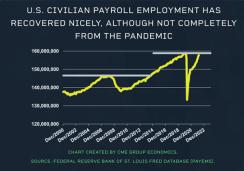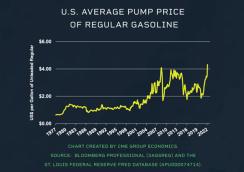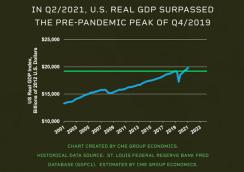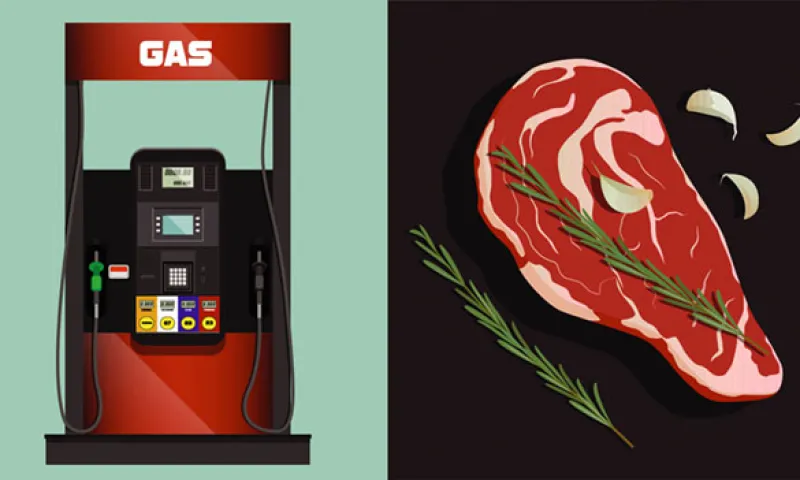By Blu Putnam, CME Group
AT A GLANCE
- Despite U.S. unemployment near pre-pandemic levels, will elevated and rising inflation eventually take a toll on economic growth?
- Pandemic disruptions have led to elevated inflation. And now, with increased geopolitical tensions, inflation may worsen before it improves.
As 2022 progresses, elevated inflation is likely to take a toll on the pace of economic growth and job creation. This is despite the fact that U.S. real GDP has fully recovered from the pandemic, surpassing its pre-pandemic peak back in the summer of 2021. And while not every job lost due to the pandemic has been recovered, the unemployment rate has declined to a historically very low level.

So, what is the concern with elevated inflation if the labor market is strong, jobs are being created and wages are rising?
With a strong labor market, the amount of dollars spent by consumers can keep growing, but with inflation, the quantity of goods and services received may decline.
Take the gasoline one buys to commute to work, run errands, travel, etc. At $4/gallon, $100 buys 25 gallons. At $5/gallon, $110 buys only 22 gallons. For this hypothetical example, that is a 12% decline in quantity, with a 10% increase in spending.

The inflation toll on economic growth is not likely to be as large as in our example when one considers all the goods and services that make up the U.S. economy. Nevertheless, if consumer spending grows less than the current elevated inflation rate, then real GDP is likely to erode at least a little as 2022 progresses.

Unfortunately, there are no quick monetary or fiscal policy fixes for this type of supply-chain-driven inflation, so buckle up for a potentially bumpy ride if inflation takes a toll on the economy.
Read more articles like this at OpenMarkets






